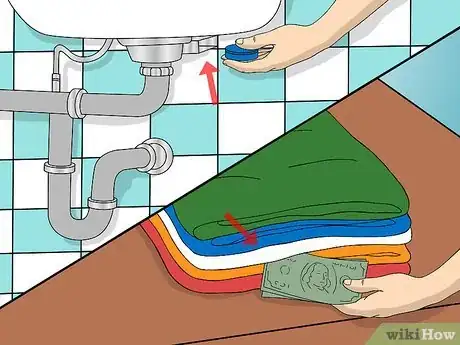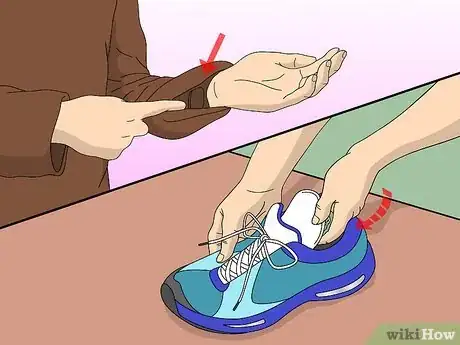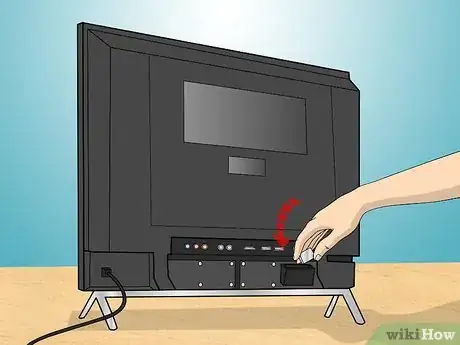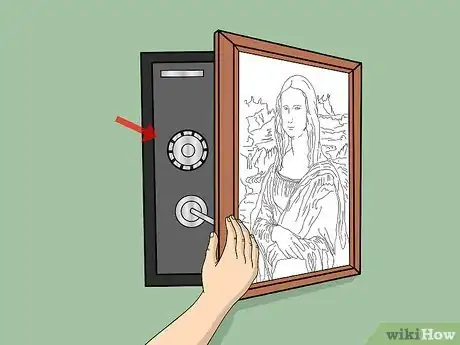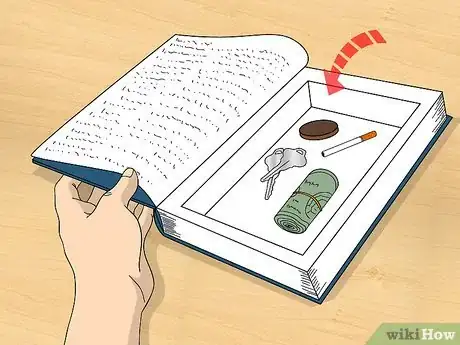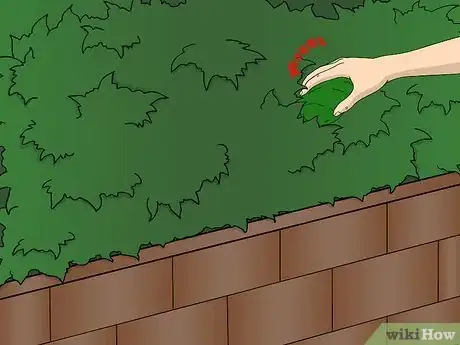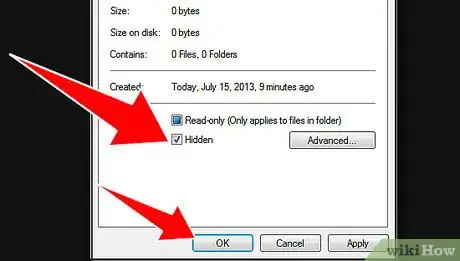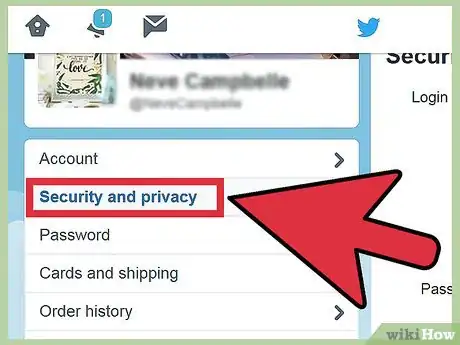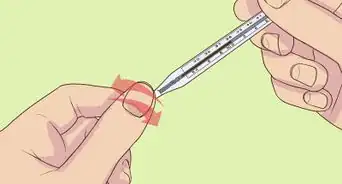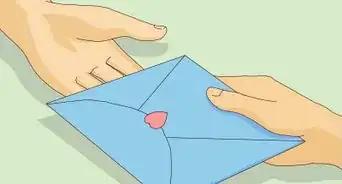This article was co-authored by wikiHow Staff. Our trained team of editors and researchers validate articles for accuracy and comprehensiveness. wikiHow's Content Management Team carefully monitors the work from our editorial staff to ensure that each article is backed by trusted research and meets our high quality standards.
There are 12 references cited in this article, which can be found at the bottom of the page.
This article has been viewed 479,447 times.
Learn more...
Tired of your parents finding your stuff? Do you have money, love letters and other embarrassing material that you need to keep between you and no one else? Hiding things from your parents takes a little effort and thinking ahead, but there are ways to keep your secrets safe. Think you aren't good at hiding things? After reading this you will be a pro at hiding stuff!
Steps
Hiding Smaller Items
-
1Use odd places. Places like your underwear drawer, under the mattress, or at the top of your closet are obvious hiding locations for things. Your parents probably tried these areas when they were younger! Use strange or more complicated hiding areas for greater success.
- Try hiding something in a sibling’s room. Those obvious locations become a little less obvious if they are looking for something specific to you. Note that this does not work if your parents do regular sweeps of the house for secrets. But if your sibling usually cleans her or his room that is not the best place to do it either.
- Tape things to the underside of your dresser or inside the top of the drawers. This keeps items from being discovered by a quick look under the dresser. Another idea is if you have an old school backpack or an old bag, then you can hide things there, your parents won't suspect anything!
-
2Use multiple layers of defense. Wrap your item in tissues or put it in a plastic bag (or both!) and hide it in the basement under some old clothes. Camouflage the item so that it looks like it “belongs” wherever you hide it.
- Make sure to use things your parents are guaranteed not to use, move or throw away.
- Storing the item in a plastic bag or wrapping it in saran wrap can open up a few additional hiding opportunities. The bottom of a potted plant will go unchecked for months, and a proper liner can protect your items from water damage. [1]
Advertisement -
3Make a stash container. There are loads of weird and wonderful ways of making one, and they are often easy to make. Grab old appliances, bottles, jars or other items that aren’t in heavy use anymore and see if they can support a few small items. This is especially useful if your household doesn’t use certain items such as television remotes or products that aren’t often kept in the storage container they come with.
- Pull off the plastic head of a spray deodorant can and remove the cover to where the deodorant is stored (this comes off easily with the help of some basic tools). Put the plastic head back on (use this as a lid).
- Old bottles or food containers make for good hiding places and can easily blend in with your room. Combine with a good liner and store in the freezer for greater camouflage. [2]
- Note that what you can use as a stash container depends on what you are trying to hide. Some items will not fit in a bottle or deodorant can.
-
4Carry items you do not want your parents to mess with. If what you are hiding is small enough, just leave it in your pocket or wallet. Remember to take it out of your pockets when you or your parents do laundry.
- You can be more inventive with carrying items. If you wear the same coat every day, make hidden pockets like up the sleeves or on the inside of your collar. You can make pockets by sewing/gluing/taping a flap where you want the pocket.
- Tape things to the inside of your shoes. This works well at the end of pointy shoes, just past where your toes reach.
- Flat items such as notes, or money can be hidden underneath the insole of the shoe.
- Some shoes come with tiny compartments for storing things, such as on the back of the heel or on the tongue. [3]
-
5Look for cavities in your appliances. Televisions, video game consoles and DVD players have flaps that open or other compartments that you can use to hide things away. Just make sure these aren't used or known by your parents.
- These cavities occasionally house important parts of the appliance, such as an Ethernet plug or soft reset switch. Make sure that inserting something into the cavity will not damage the appliance.
Hiding Larger Items
-
1Use the attic. The attic is used for long term storage and is a place that few people go on a regular basis. Hide the item somewhere easy for you to access, but out of plain view in case someone needs to move something to or from the attic. Valuable items are found in attics all the time, and there’s a reason for that – people rarely have reason to enter the attic! [4]
- Put the item in a garbage bag and cover it with old clothes you no longer want to better camouflage the item.
- Labeling the bag can help add to the disguise. For example, writing "Christmas decorations" on the bag will prevent the bag from being examined until the appropriate time of the year.
-
2Get a friend’s help. Hide something at a friend’s house if they have more space to spare, or there is no danger of getting them in trouble for doing so. For example, if your parents frown on junk food or soda, a friend’s place makes the perfect stash spot.
- Make sure your stuff gets hidden properly or marked appropriately as yours. You don’t want someone to take your stuff.
-
3Buy a portable safe. Your parents might not approve of this idea, especially if the safe is in plain sight. You can store the safe in the attic or somewhere else hidden to keep your parents from being suspicious.
- A mini fridge for your room might can serve the same purpose as a safe and will look much less out of place if you keep it in plain sight. Look for a mini fridge that comes with a locking mechanism to keep just anyone from checking out your fridge.
- Safes and mini fridges can also be camouflaged. Tape some cardboard around the safe to create the illusion that the safe is simply a storage box full of your things. [5]
-
4Hollow out a book. This is a fun way to hide things that is particularly effective if you do a lot of reading. Make sure it's a book that fits your reading habits.
- Keep an actual copy of the book you hollowed out in case your parents or siblings ever want to actually borrow that book.
- This same technique works with items such as old VHS tapes or DVD cases. Throw them in a box of old tapes or other junk to complete the look.
- Several websites offer services for hollowing out books, and can cut the storage area out to your specifications.
-
5Hide your things outside. Hiding items outside gives you a much larger area to work with when hiding items and makes tracing items back to you more difficult. Take care when hiding items outside that someone else doesn’t find and take the item – your parents aren’t the only ones to worry about if you choose this route.
- Make sure you put them somewhere very well hidden, so nobody will find them. The woods are a great place with plenty of nooks and crannies to hide things. Try hiding a few green carrier bags in a thick prickly bush, but make sure they are out of sight.
- The shed or garage is a good place to hide larger items. These areas are mostly used for storing items that are used only occasionally, such as the lawnmower or power tools. Make sure to properly mask the item you are hiding by placing it in a bag or other container first.
- Dig a hole and hide something there. Make sure the item is properly protected to avoid damage from the elements. Avoid digging in a spot that might give away your handiwork. For example, digging a hole in a grassy patch will leave a telltale bald area of fresh dirt.
- Large partitions under the house or patio also allow for storage without drawing much suspicion. If items such as the lawnmower are also stored there, be ready to move your stash when it comes time to mow the lawn. [6]
Hiding Information
-
1Delete your web history. Web browsers will record a history of sites visited by default. Your parents can check the history window to see all sites that were visited during a certain time period. Go into the settings of your web browser to delete the history. You can delete individual websites or clear the entire browsing history if preferred.
- In Google Chrome, go to Settings, followed by the History tab to access History settings. You can also navigate Privacy settings here. [7]
- In Microsoft Edge, go to Settings and click on “Choose what to clear.” You can choose from several different types of files to clear, including browsing and download history. [8]
- While it’s possible to keep browsers from tracking history altogether, your parents will likely notice this setting when they attempt to access their own history. If the browser supports multiple users, make sure that settings are unique to each user. Otherwise, it’s best to delete only particular pieces of browsing history.
-
2Hide files properly. Move files you are trying to hide, such as chat logs or passwords, into folders that require passwords to access. Remove the files from plain sight – the idea is to make finding the files as difficult and oblique as possible.
- Rename the file into something innocuous that doesn’t give away the purpose of the file. “Passwords.txt” is a bad choice!
- Files can also be hidden in file folders for existing programs that otherwise have nothing to do with your chat logs or passwords, such as the data folder of a game application.
- Files can be made invisible with the “hidden” property on Windows OS. You can find this option under the Attributes field in file Properties. [9]
- Hiding files in a similar fashion on Mac OX is a bit more complicated – it may be easier to physically hide the file in this case. [10]
- Cloud services such as DropBox or OneDrive can store your files while also requiring additional login steps to help reinforce your security.
-
3Lock your phone. Give your phone a password to prevent your parents from having access to your texts and phone call history. If you have to leave your phone laying around to take care of a quick errand, make sure to put the phone to sleep in order to enable the lock. It’s a good idea to keep your phone on your person at most times.
- Use a unique password this is difficult or impossible to guess.
- Use a combination of letters, number and special characters when possible.[11]
- Consider fingerprint unlocking if your phone supports the feature. This provides an extra layer of security to your phone.
- For additional security, apps such as Snapchat can help you delete texts and photos automatically if you don’t want them to be discovered.
-
4Keep your online accounts private. Facebook, Instagram and other social media sites you use should be kept private. This will keep your parents (or others) from finding your account and freely viewing your messages and photos. You’ll have to add them to your network for them to see your activity.
- Make a second, family friendly account if you are concerned about your family seeing certain activities, but don’t want to shut them out of your social accounts completely.
- Adjust your sharing settings. Facebook offers selective sharing options that can help filter out who gets particular access to your photos and posts. [12]
-
5Have a cover story. If your items or chat log does get find out, be ready with a believable excuse. Parents aren’t necessarily prone to believing such stories, but depending on the item and the nature of your friends, you might be able to create a convincing argument. Just don’t throw your friend under the bus!
- A few examples include, "I'm keeping that for a friend,” or “A friend grabbed my phone and took these pictures.”
- Use a friend that your parents don’t know in your cover story. You don’t want your parents to give your friend’s parents a call and blow your cover.
Warnings
- No matter how well you hide something, there is always a chance you will get caught. Be prepared.⧼thumbs_response⧽
- Never make a stash spot on someone else's property without their consent. This is illegal.⧼thumbs_response⧽
- Remember that incognito mode will not stop info from getting over to your employers or internet service providers, but it will make sure this article can't be found by your parents.⧼thumbs_response⧽
References
- ↑ https://www.nachi.org/hide-valuables.htm
- ↑ http://www.complex.com/style/2013/06/secret-stash-spots/
- ↑ http://www.ozy.com/good-sht/secret-soles-help-you-hide-stuff-in-your-shoes/39796
- ↑ http://www.thepennyhoarder.com/theres-probably-cash-hidden-in-your-walls-heres-how-to-find-it/
- ↑ http://blog.officezilla.com/mini-fridge-goes-camo/
- ↑ https://www.lewrockwell.com/2012/11/wayne-m-thomas/constructing-and-finding-hidingplaces/
- ↑ https://support.google.com/chrome/answer/95589?hl=en
- ↑ http://windows.microsoft.com/en-us/windows-10/view-delete-browsing-history-microsoft-edge
- ↑ http://windows.microsoft.com/en-us/windows/what-is-hidden-file#1TC=windows-7
About This Article
To hide small things from your parents, like money, grab an old appliance or bottle that isn’t used very much and try to fit a few items in them. For example, use the battery compartment of a TV remote your family doesn’t use anymore as a hiding place. Alternatively, carry items you don’t want your parents to mess with by taping them to the inside of your shoes or placing them underneath the insole. For larger things, put them in a garbage bag labeled “Christmas decorations” and stash it in the attic, since people rarely ever go up there. If your house doesn’t have an attic, try finding a spot to hide them in a garage or crawl space under the house. For more tips, including how to hollow out a book into a stash container, read on!

